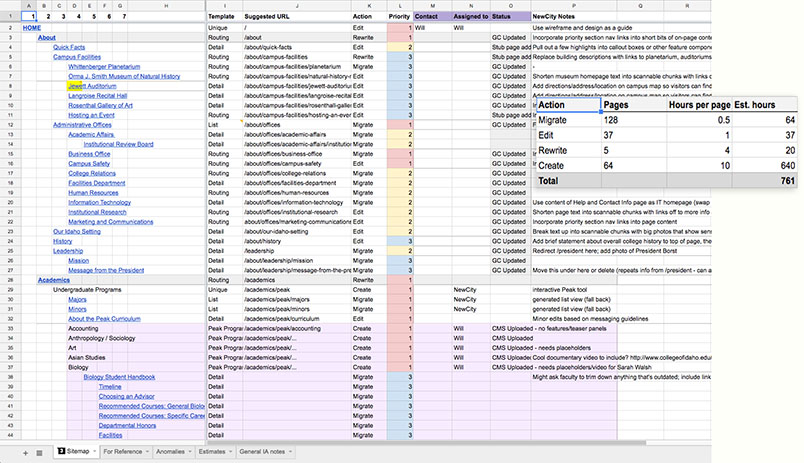One of the most important tools for managing the creation, revision, or migration of content for a website is the content work plan. There are commercial tools available, but we most often rely on a spreadsheet with columns for plan details.
To develop a content work plan we recommend these steps:
- Match pages or sections in the new site architecture to existing pages where possible.
- Identify what content is needed to help audiences accomplish their goals or to support strategic conversion goals.
- Identify “buried treasure” content that could be brought to the foreground.
- Determine how to handle pages or sections that don’t have an obvious home in the new site architecture.
- Provide high-level notes about the content to be edited or created.
- Prioritize the content work based on audience impact — you may not be able to do everything you’d like to do in time for a launch. You can always tackle the rest later.
Below is an example of the Content Work Plan we created for the College of Idaho:

Content work plans can also be used as project management resource. In the example above, we used the “Action” classification in column K to estimate the hours required for the work in a separate spreadsheet tab.
Rubric for Evaluating Existing Content
These are helpful questions to ask as you evaluate existing content:
- Does it address questions that each audience has when coming to this page?
- Does it advance your organizational goals in a persuasive manner?
- Is it communicated clearly and succinctly?
- Does it support key brand messages where appropriate?
- Does it back up messages with supporting facts or stories?
- Does it follow best practices for web writing and visual formatting?
- Can it be found via major search engines?
- Is it suitable for mobile?
- Is it clear what the user can/should do next?
Start your plan with NewCity’s content work planning template.

